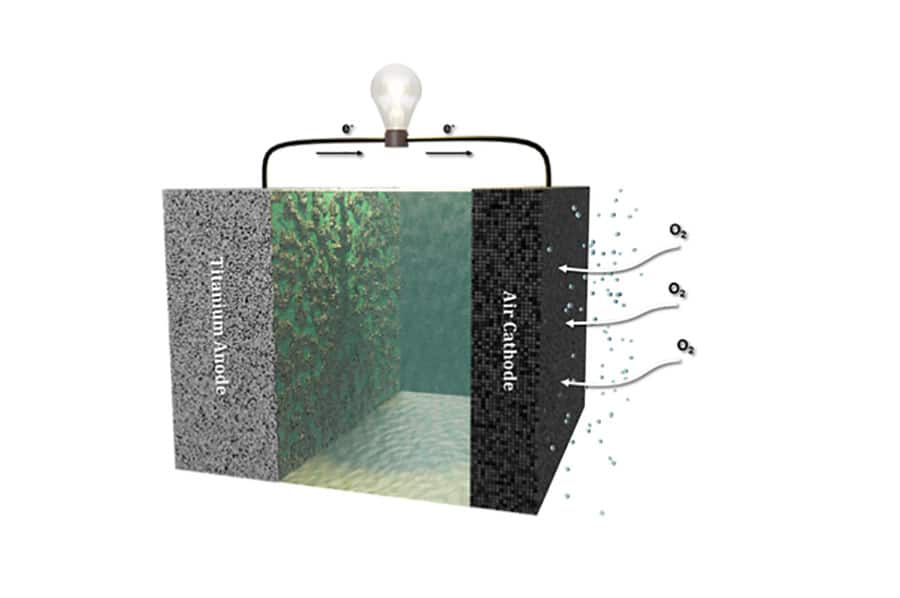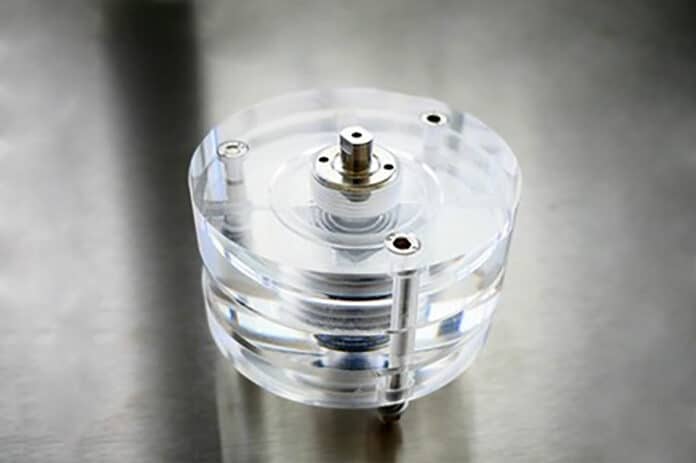Metal-air batteries are one important line of development as promising energy storage devices from low-power electronics to large-scale applications. These batteries hold a promise to provide very high theoretical energy densities, environmental friendliness, cost-effectiveness, and safety.
Among various possible anode candidates for metal-air batteries, mostly zinc, aluminum, iron, and silicon have been the focus of research. On the other hand, titanium has hardly been considered an active material, and experimental results have not yet been available.
Now, researchers at Forschungszentrum Jülich have successfully developed and lab-tested a novel titanium-air battery (Ti–air battery). The battery is developed in cooperation with researchers at the Technion – Israel Institute of Technology in Haifa.
Metal-air batteries are particularly suitable for applications where compact size is important and in large-scale stationary storage systems that use low-cost, common, and non-toxic materials. Titanium, although known as an expensive material, is much cheaper than lithium in terms of material costs but is more expensive than aluminum. The metal is the ninth most frequently occurring material in the earth’s crust, so the available resources are correspondingly abundant.
Also, Titanium is of interest as an electricity storage material because each atom can donate up to four electrons for charge transfer while being relatively light and extremely resistant.

In a novel non-aqueous primary Ti-air battery, researchers succeeded in utilizing its electrochemical potential for the storage of electrical energy by applying 1-ethyl-3-methylimidazolium oligofluorohydrogenate (EMIm(HF)2.3F) room temperature ionic liquid. Ionic liquids consist of salts with an atypical, very low melting point, which are used in a variety of applications due to their special electrical and material properties.
Theoretically, titanium-air batteries have two to three times the energy density of zinc-air batteries used today as standard button cells in hearing aids, control modules, and sensors. The theoretically achievable voltage of the titanium-air battery is in a similar range to that of zinc-air batteries. In experiments, the Ti-air battery could successfully be operated under relatively high discharge currents of up to 0.75 mA cm−2 with an average cell voltage of up to 1.2 volts, yielding up to a discharge capacity of 66 mAh cm−2.
Researchers say when its full potential is harvested, such a metal–battery holds a unique potential to be the only metal with 4 electrons transferred during its discharge.
Journal reference:
- Yasin Emre Durmus, Marcel Kaltenberg, Krzysztof Dzieciol, Maximilian Schalenbach, Danny Gelman, Boris Shvartsev, Hermann Tempel, Hans Kungl, Rüdiger-A. Eichel, Yair Ein-Eli. Breaking the passivity wall of metals: Exempli gratia non-aqueous Ti–air battery. Chemical Engineering Journal, 2023; DOI: 10.1016/j.cej.2023.141903
